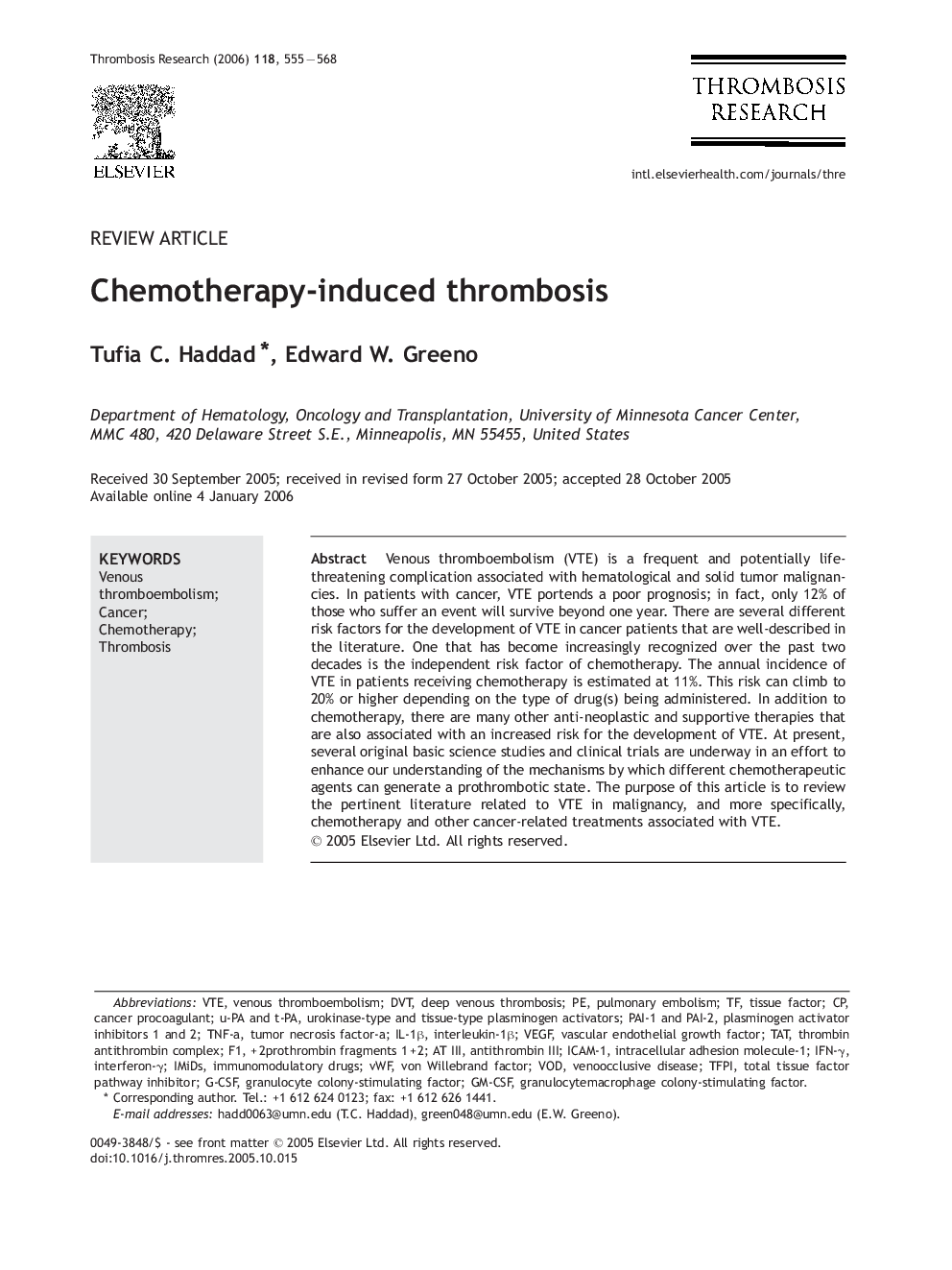| Article ID | Journal | Published Year | Pages | File Type |
|---|---|---|---|---|
| 3030146 | Thrombosis Research | 2006 | 14 Pages |
Venous thromboembolism (VTE) is a frequent and potentially life-threatening complication associated with hematological and solid tumor malignancies. In patients with cancer, VTE portends a poor prognosis; in fact, only 12% of those who suffer an event will survive beyond one year. There are several different risk factors for the development of VTE in cancer patients that are well-described in the literature. One that has become increasingly recognized over the past two decades is the independent risk factor of chemotherapy. The annual incidence of VTE in patients receiving chemotherapy is estimated at 11%. This risk can climb to 20% or higher depending on the type of drug(s) being administered. In addition to chemotherapy, there are many other anti-neoplastic and supportive therapies that are also associated with an increased risk for the development of VTE. At present, several original basic science studies and clinical trials are underway in an effort to enhance our understanding of the mechanisms by which different chemotherapeutic agents can generate a prothrombotic state. The purpose of this article is to review the pertinent literature related to VTE in malignancy, and more specifically, chemotherapy and other cancer-related treatments associated with VTE.
